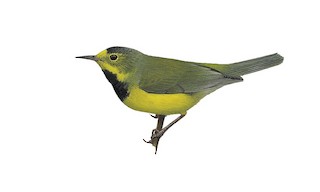Bachman's Warbler Vermivora bachmanii Scientific name definitions
- CR Critically Endangered
- Names (22)
- Monotypic
Text last updated August 19, 2011
Sign in to see your badges
Species names in all available languages
| Language | Common name |
|---|---|
| Bulgarian | Черногърдо коприварче |
| Catalan | bosquerola de Bachman |
| Croatian | maslinasta sjeničica |
| Dutch | Bachmanzanger |
| English | Bachman's Warbler |
| English (United States) | Bachman's Warbler |
| Estonian | bambusesäälik |
| French | Paruline de Bachman |
| French (Canada) | Paruline de Bachman |
| German | Gelbstirn-Waldsänger |
| Japanese | ムナグロアメリカムシクイ |
| Norwegian | sumpparula |
| Polish | lasówka żółta |
| Russian | Багамская червеедка |
| Serbian | Bahmanova cvrkutarka |
| Slovak | horárik žltočelý |
| Spanish | Reinita de Bachman |
| Spanish (Cuba) | Bijirita de Bachman |
| Spanish (Spain) | Reinita de Bachman |
| Swedish | bachmanskogssångare |
| Turkish | Bachman Ötleğeni |
| Ukrainian | Червоїд жовтий |
Vermivora bachmanii (Audubon, 1833)
Definitions
- VERMIVORA
- vermivora / vermivorum / vermivorus
- bachmani / bachmanii
The Key to Scientific Names
Legend Overview
Introduction
Bachman's Warbler—a frustrating, exhilarating, and continuously pursued North American bird—has been the subject of cartoons, threatened litigation, and international cooperation, but of no detailed field study. Nearly, or perhaps already, extinct, this species has been written off before, only to reappear. Despite intense collection, a continuing curiosity in and search for the species by ornithologists and birdwatchers, and a keen interest in its conservation from the time of its initial discovery in 1832 to the present day, few hard data exist to describe this elusive species. Mystery and confusion about the bird consequently abound, even relating to the pronunciation of its name. The bird was named after Audubon's friend John Bachman, a Lutheran minister from Charleston, South Carolina, who pronounced his name "BACKman" (Buhrman 1977).
Today Bachman's Warbler is almost a holy grail to many ornithologists and birdwatchers. The most recent specimen was collected in 1949 in Mississippi (Sciple 1950), and the last probable breeding pair was seen in South Carolina that same year (Sprunt 1970). The last confirmed sightings were all near Charleston, South Carolina in 1958–1961 (Sprunt 1970), which included a photograph of singing male, taken May 15, 1958 by J. H. Dick. Scattered sightings in the southeastern United States and Cuba extend into the 1980s; see Hamel (Hamel 1986) for discussions of these reports.
This early migrating, foliage-gleaning insectivore nests in shrubs in bottomland hardwood forests with a dense shrub layer, probably in the vicinity of openings or internal edges. Putative association with canebrakes and winter restriction to a single Caribbean island (Cuba), exposed the species to habitat destruction directly through land clearing and indirectly through hurricanes and increased predation and parasitism accompanying fragmentation of forests. As will be obvious in the following account, a great deal is unknown about the biology of Bachman's Warbler.

- Year-round
- Migration
- Breeding
- Non-Breeding











































